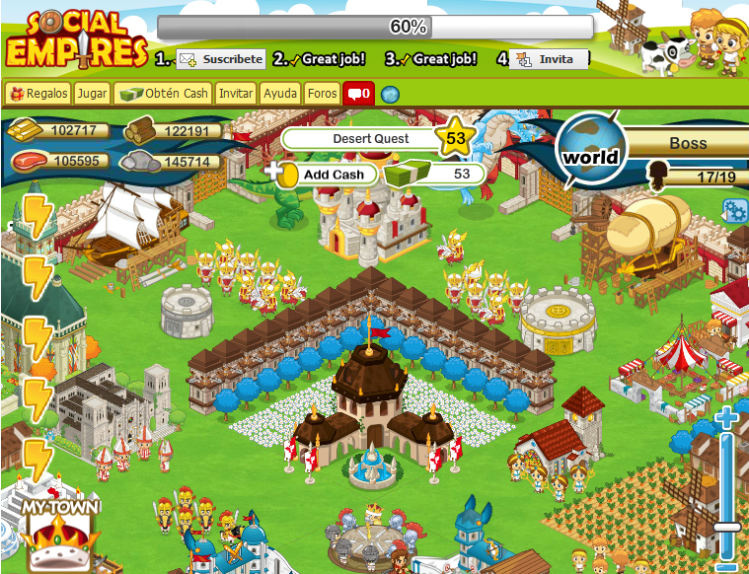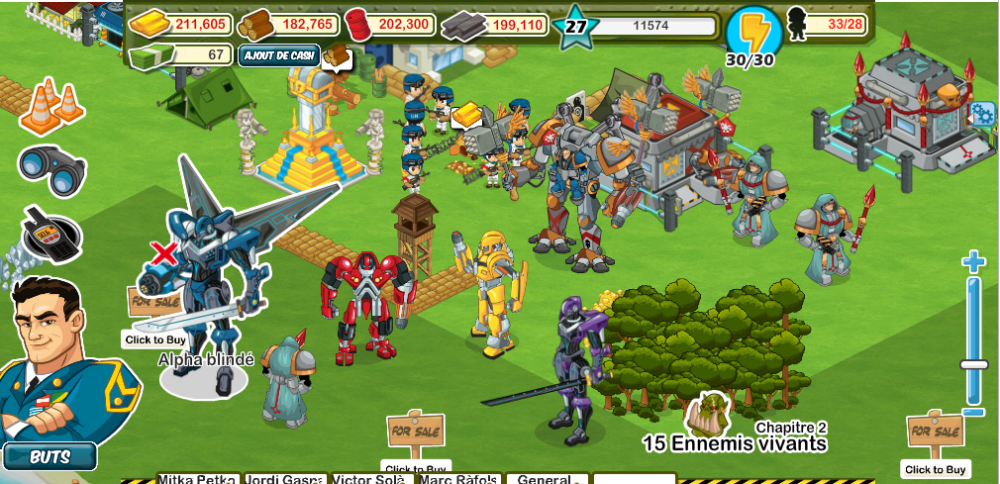Stanley parable – Videoanálisis y opinión sobre el sistema narrativo y branching
Os dejo aquí con este vídeo de 20 minutos que acabo de hacer sobre Stanley Parable, y mi opinión acerca de su sistema narrativo.
El juego nos pone en la piel de Stanley, un trabajador más de una gran corporación cuyo único cometido es picar teclas según le va indicando el monitor de su terminal. Stanley es feliz con su trabajo, hasta que un buen día, parece que todo el mundo se ha esfumado de la oficina. Stanley decide salir a investigar y descubrir qué está ocurriendo.
El juego es obra de Davey Wreden, que con tan solo 22 años, sobre mediados de 2011, creó un mod usando Source, el engine del Half-life 2. Después de la buena acogida que tuvo el mod en moddb.com, Davey aprovechó el material del mod y añadió contenido adicional con la ayuda de William Pugh, que le ayudó en el modelado de los objetos 3D. No fue hasta octubre de 2013 que por fin salió esta versión que analizo en el vídeo.
Como ya digo en el vídeo, Stanley Parable me parece una interesante experiencia interactiva en el terreno de la narrativa, que aunque no es comparable a estas, sí se asemeja a otras obras interactivas como Dear Esther o Gone Home.
La voz del actor Kevan Brighting ayuda a crear una atmosfera muy creíble, como si estuviéramos inmersos dentro de una película interactiva. La voz en off va relatando la historia según vamos avanzando, e incluso se anticipa a las acciones que vamos a tomar y lo cuenta en tiempo pasado como si eso fuera lo que ocurrirá. Y ahí está la gracia del juego, poder elegir una acción contraria o opuesta a lo que el narrador nos presenta, aunque cabe decir que esto se limita a unos pocos puntos en el juego, y, en la mayoría de ocasiones, llevar la contraria al narrador nos llevará a una muerte segura de las formas más extrañas.
De ahí que me cueste calificarlo como un juego en sí, ya que aun intentando hacernos creer que el juego está dotado de una profundidad única, esta se reduce a elegir la opción A ó B en escasos momentos a lo largo del juego. No en vano el propio autor comenta que es posible ver los 6 finales posibles en menos de una hora.
Si me pongo a comparar Stanley Parable con por ejemplo una aventura conversacional de finales de los 80, nos encontramos con que las aventuras conversacionales te permiten visitar diferentes estancias o lugares introduciendo cualquier punto cardinal, y además tienen un sistema de acciones, representados por verbos simples como Coger, Tirar, Abrir, Usar, etc, además de un sistema de inventario. Es decir, una aventura conversacional, a mi entender, tiene una mayor sinergia de elementos que el sistema que se nos presenta en Stanley Parable.
Otra de las razones por las que soy reticente a calificarlo como videojuego, es que pasarse el juego no tiene reto alguno más allá de seguir las indicaciones del narrador, y las muertes son consecuencia de hollar caminos que el diseño del juego invita a explorar. Entonces podríamos calificarlo como un mal diseño por el hecho de que el jugador, una vez elegido cierto camino, no tiene la opción de volver atrás, ni rectificar, ni tan siquiera hay una justificación a nivel de reglas de juego para dichas muertes más allá de la mente burlona del propio Davey Wreden.
Aún así repito, vale la pena echarle un ojo a esta narración interactiva pues experimenta con una forma novedosa de establecer contacto con el jugador, una forma a la que todavía le falta cierta maduración para llegar a ser una experiencia de juego completa.
Costume Quest: Game Design Review (I)
Costume Quest it’s a game developed the 2011 by Double Fine, creators of Psychonaut, Brutal Legend, The Cave or Stacking among others. I’m fan of Tim Schafer since Monkey Island, I think creative and smart guys like him is what makes the games industry less “industrious”, or I should say ugly, where the business side is always powered by the ultimate goal of making fun games and have fun while making them, or at least try so. That’s why i’ll analyze some of his games here just as a little homage.
Some time ago I read about Double Fine new modus operandi, that’s making some small to mid-sized games simultaneously in order to minimize financial risk and ensuring the company survival. Costume Quest was included on the first bach.
When I started the game I didn’t know what to think about. Graphics are simple but cute, so they do their job. Dialogues are found aplenty, but they are fundamental to push the story forward. They are cleverly integrated in the game as comic book bubbles, so they do not break the immersion but when there’s too much text in a bubble, which luckily only happens from time to time.
One of the WTF moments is when you engage in a simple turn-based combat against the monsters that are found within some houses along the neighbourghood. That’s when the the custome you start with (a cardboard robot) turns into a real big steel robot. Your robot can trigger a simple and a special attack. The latter will only be ready after you’ve performed well after 3-4 turns.
To add some spice to the combat, you must hit a proper key at the exact time while a power bar is filling up, or press it to defend against a monster’s attack. But you must be fast, otherwise the action will fail.
As the combat is so simple, the developers devised a simple trick not to make the combats boring. How did they do that? There are a few combat conditions where you must press a key to succeed. It can be after triggering a simple or special attack, and to protect yourself from an enemy attack. Instead of pressing the same key for each of these situations, which would have been a real downer after so many combats, you must press a random key each time…
If you think about it, this makes you stay alert and focused to watch what key you must press and do it fast, otherwise you will fail the attack or defense. There’s only 4 possible keys to press, so it’s something your memory can handle. I’m sure there was some playtesting prior to determine this number. 5 or 6 keys may have been too much for an average user to handle.
Let me split the process to understand the process behind.
1 – You press a key for the attack to perform (simple or special).
2 – You see on screen the random key you need to press immediately.
3 – There’s a brief moment when you have to think where’s the key to press, and hit it before it’s too late.
Why this moment of need-to-think-where-the-key is exists? An average gamer is very used to press the arrow keys really fast (or the keys you have bound for the player movement). If you saw an arrow key symbol on screen, the time i’d take you to press it would be minimal. So they cleverly removed this option.
BUT what happens when the keys you need to press are for other functions that you execute from time to time while you are not in combat but roaming around the game map?
– The key to check the journal
– The costume special ability key (it’s the second most used, but you usually have it pressed for a long time instead of pressing it repeatedly, like the running faster ability, which somehow makes you more unconcious of it than the key you use to hit cans to get candies)
– The space key to talk to people
– The key to hit cans and other objects (the most used)
When the keys appear on screen during a combat, you will be more aware of the hit-cans key and the space key, just because we are accustomed to use them in other games or apps like a word processor, and because the latter is bigger. But for the other two, the check journal and costume special ability keys, you’ll have to think before hitting them.
As you keep doing more combats, the time lapse will reduce and you’ll get better, but there always will be this brief moment of thinking due to
1 – the randomness before mentioned.
2 – the occasional use of some keys during the game, which makes you not proficient using them as action keys (as they are not action keys outside the combat, like the checking journal key).
This is a magistral game design lesson from Double Fine about reusing resources in benefit of the gameplay.
There are many other things to analyze from Costume Quest that are worth studying, but I’ll stop here and write another entry, this has got too lenghty! =)
45-min Play Sessions: Gone Home
It been a long time since my last game design review. It’s time to grease up the skills again!
This night I played Gone Home. I hadn’t read any complete review, but I kept coming across the name on various opinion articles and news. I keep a list of games I want to play when I have some time to try them even I can’t play them through. Dealing with a job and other responsibilites makes it difficult unluckily to keep track of all the good games being released.
I imagined Gone Home to be a mystery game like those were the game design principles are basically made up of a measured mix of exploration in silence, occasional disrupting sounds and a story that it’s delivered by chunks of scattered pieces that you must assemble to get the whole picture of it.
I was not misguided for what I can see in my first 45 minutes.
Things I didn’t like during my first play.
Being blocked. I would have been awesome to open the door and go outside, I don’t know if the game will allow to go outside eventually, but this felt to me like “another game on rails”. Luckily this feeling starts to fade out as you keep playing the game. It would have been nice to create a situational scene that justifies why you can’t go outside the house to add to the suspension of disbelief.
Another fact was the possiblity to explore objects, but most of them only have an aesthetic purpose not related with gameplay. It was a bit weird being able to explore some 3D objects, whilst others were not interactive.
Being “forced” to open all drawers starts feeling tiresome after you’ve peformed the same action more than 10 times in a row, but you know it’ll be the only way to find the clues to move forward. A good way to minimize this feeling would have been locking most of the drawers that do not provide relevant information to the player. To make the player aware a drawer is not functional, a message “drawer locked” could be differentiated from a “drawer locked with key”. The player will know the latter is interactive and will catch his attention and memory to go back to it later when he finds the proper key. Maybe a visual differentiation beetween both types of drawers would have been enough… a playtesting would tell if this is a good idea or not!
The thunder thing.
Everytime you happen to read a note, or when your sister’s diary is updated, a thunder is cracked. So after the 3rd time it’s too previsible and doesn’t convey the frightening it should due to this bit of abuse.
Things that I liked:
The plot. The pieces of the story are cattered in a well measured timing, making it easier for the player to get related with the story. The additional info in the shape of pictures, drawings, notes, makes the setting more bealivable.
This gradual unfolding on the plot makes the player want to know more about the story.
Somebody may argue the graphics are not top notch, but they fulfill perfectly their purpose, even on some objects the polygons are too noticeable.
I deem Gone Home a videogame different of the likes of Dear Esther, where the level of interactivity, namely the actions that the player can perform, is very low, being limited to coming across different trigger points that move the story forward as the player strides onto them. Gone Home looks apparently more rewarding than Dear Esther as the ratio of exploration of both the environment (rooms, walls, doors) and the microenvironment (drawers, objects, notes, audio recordings) is more frequent and has a direct impact on the unfolding of the story.
So that’s all on this first play. Do you share this thoughts? Let me know!
Working on an Old-School Isometric RPG
It been long since the last time I updated my blog. I’ve been busy shifting between my 8-hour regular job and a side project with my partner Miguel A.L. Morillo.
We are making an isometric RPG, the likes of Baldur’s Gate or Planetscape Torment, with some remarkable differences. Ours is a lesser scope project than these mythic AAA games, but we are racking our brains to get the most out of our resources.
We’ve been 2 months preplanning this, and it’s been 2’5 more already in production.
We already have a cool isometric editor that can load & save tile maps and 3D models, also a visual dialogue editor for the story.
If you want to follow our work, please visit us at http://autoloot-games.com/
GOTY: Batman Arkham City
If it keeps the quality level witnessed in this video, only a Big Bang can’t avoid Batman Arkham City of not being the Game of the Year… and it’s released the 21.10.2011, on my birthday… no best way to celebrate it 😉




Recent Comments